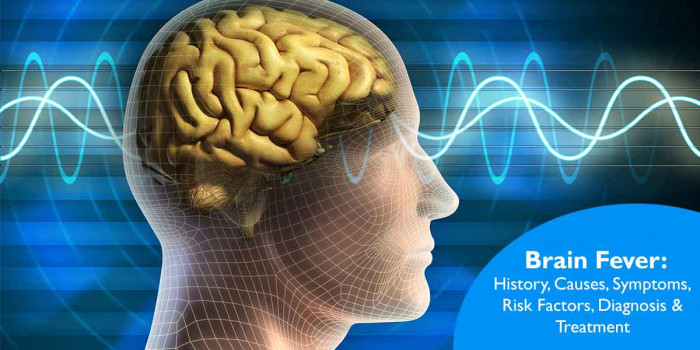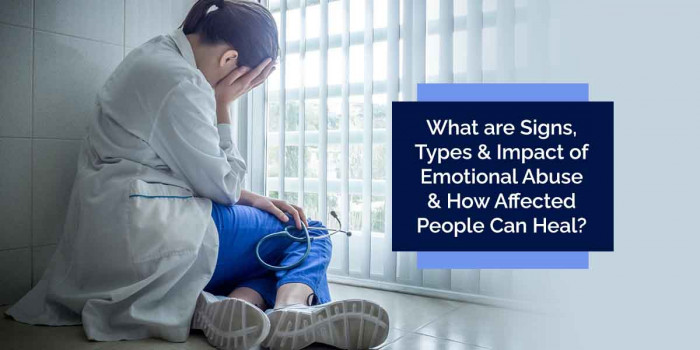What is Brain Fever? Know About its Causes, Symptoms, Diagnosis & Treatment
Brain fever is considered a potentially life-threatening disease in which partial brain inflammation occurs, and fever is its main symptom.

Brain fever is a medical infection or an infection caused by bacteria or viruses, which results in inflammation of the brain. One of the four conditions described as brain fever is Encephalitis (most common). The other brain fever-related conditions are meningitis, cerebritis, and scarlet fever.
Encephalitis is a form of irritation or acute inflammation (swelling) of the brain that is typically caused by viral infections. The two major types of Encephalitis (brain fever) are primary and secondary. Primary encephalitis happens when a virus directly infects the brain and even the spinal cord, while secondary encephalitis happens when the infection begins elsewhere in the body part and slightly shifts to the brain.
It is a very rare disease, but it is a serious disease that can be dangerous to life. Here are the signs & symptoms, causes, risk factors, treatment, and the history of the disease.
Brain Fever in History & Pop Culture
In Victorian literature, brain fever has been recorded most often, and it is described as a potentially life-threatening disease that is typically a result of severe emotional upset. In the Wound Dresser - a letter series that Walt Whitman wrote from Washington hospitals, the Letters of 1864 described a patient he lost to brain fever.
Also, it was used in various Arthur Conan Doyle’s Sherlock Holmes stories like The Crooked Man, "The Naval Treaty" in The Memoirs of Sherlock Holmes, "The Adventure of the Copper Beeches," "The Adventure of the Cardboard Box," and "The Adventure of the Musgrave Ritual."
Besides, brain fever has been mentioned about in Bram Stoker's Dracula, Dostoyevsky's The Brothers Karamazov, Alexandre Dumas's The Count of Monte Cristo, Emily Brontë's Wuthering Heights, Francis Hodgson Burnett's A Little Princess, Isaac Asimov's 1945 short story "Escape," Squire Toby’s Will by Joseph Sheridan Le Fanu, Daria season 2 episode "Ill," 2012 video game Dishonored, and The Way of All Flesh by Samuel Butler.
Signs & Symptoms of Brain Fever
Brain Fever’s signs and symptoms can vary from mild to severe. Infants and young kids show distinct symptoms.
Mild symptoms may include:
- Laziness or fatigue
- Headache
- Vomiting
- Fever
- Stiff neck
Severe (harsh) symptoms may include:
- 103°F fever or higher
- Irritability
- Seizures
- Drowsiness or sleepiness
- Sensitivity to light
- Slower movements
- Confusion
- Hallucination
- Unconsciousness
- Coma
Consult your doctor immediately if you notice any of the above signs.
Immediately call a doctor if your kid is experiencing the following symptoms:
- Poor appetite
- Vomiting
- Body stiffness
- Constant crying
- Bulging Fontanel (soft stain in the scalp)
Causes of Brain Fever
Various viruses can cause brain fever. It helps categorize potential causes: arboviruses, common viruses, and childhood viruses.
Among the common viruses, the most common one in developed nations is herpes simplex. It usually travels through a nerve to the skin, where it causes a cold sore.
Other common viruses include mumps, HIV, cytomegalovirus, and Epstein-Barr virus.
The chickenpox, measles, and rubella are the childhood viruses that cause brain fever. Insects carry viruses called arboviruses.
Risk Factors for Brain Fever
The people who are at a higher risk are children below the age of 1, older adults, and those having weak immune systems.
If you live in an area where mosquitoes and ticks are common, you may have a high risk of getting brain fever.
Also, in the summer and fall, people are more prone to getting brain fever as the insects are highly active during this time.
Diagnosing the Brain Fever
For the diagnosis of brain fever, the doctor asks about the signs and symptoms. The following tests are conducted:
1. ElectroEncephaloGraph (EEG)
An EEG helps record brain activity using electrodes attached to the scalp. Though it doesn’t detect the virus, certain patterns may alert the neurologist to an infectious source of symptoms. As it can lead to seizures and coma in later stages, it is crucial in determining the affected areas and types of brain waves occurring in every area.
2. Brain imaging with MRI or CT scan
Both CT scans and MRI are used in detecting brain structure changes. They can help in ruling out other possible explanations of symptoms - stroke or tumor. Some viruses tend to affect the brain, and the part of the brain the virus affects can help find out the disease.
3. Spinal tap or lumbar puncture
This procedure involves inserting a needle into the lower back to collect a sample of spinal fluid and test it for signs of infection.
4. Brain biopsy
In a brain biopsy, the doctor takes small samples of brain tissue to test if any infection is present. It is rarely conducted as complications may occur. It is performed if treatment does not work or when doctors can’t determine the brain swelling’s cause.
5. Blood tests
A blood test may help suggest the signs of viral infection and is rarely conducted alone. So it helps diagnose brain fever along with other tests.
Treatment
Antiviral medications (like acyclovir) may help in treating encephalitis but not other forms of brain fever. The treatment, which focuses on relieving symptoms, includes:
- Complete rest
- Sedatives (effective for seizures, aggressiveness, restlessness, irritability)
- Lukewarm sponge baths
- Corticosteroids (reduce brain inflammation)
- Painkillers & paracetamol (Tylenol) for pain and fever
- Fluids (sometimes through IV)
- Mechanical ventilation (for breathing and other supportive treatment)
- Anticonvulsants (prevent or stop seizures)
In case of seizures and brain swelling, hospitalization may be required.
Conclusion
Though brain fever is not always preventable, you can get vaccinations for viruses that prevent brain fever. Use repellents and wear long-sleeved shirts and pants to prevent yourself from mosquitoes and ticks.
Also, the complications of brain fever are vision, speaking & hearing problems, fatigue, memory loss, difficulty breathing, behavioral changes, and intellectual disability. So physical, speech, occupational, and psychotherapy could help in relieving mood disorders, boosting strength, balance, flexibility & coordination, and redeveloping daily skills.
Popular Posts
10 Amazing Lessons You Should Learn From Mr Olympia Jeremy Buendia
Jeremy Buendia is an fitness inspiration for people from all over the world, there is a reason why he has been so successful at what he has been doing. Don’t look for the reasons take some lessons from the fitness sensation right here, that can change your lives.
Ethan Stephans
Why Are Pubic Hair Thicker Than Body Hair?
As children we always had several questions about our bodies, which were alien to us, this post is to serve a decade-long curiosity of young boys/girls about their pubic hair and its texture.
Augustus Perez
7 Sleeping Tips That Every Woman Should Follow During Pregnancy
Pregnancy is not easy. Pregnant women experience a lot of changes in their bodies, like increased stomach size, frequent urination, and sleeping discomfort.
Still Unfold








